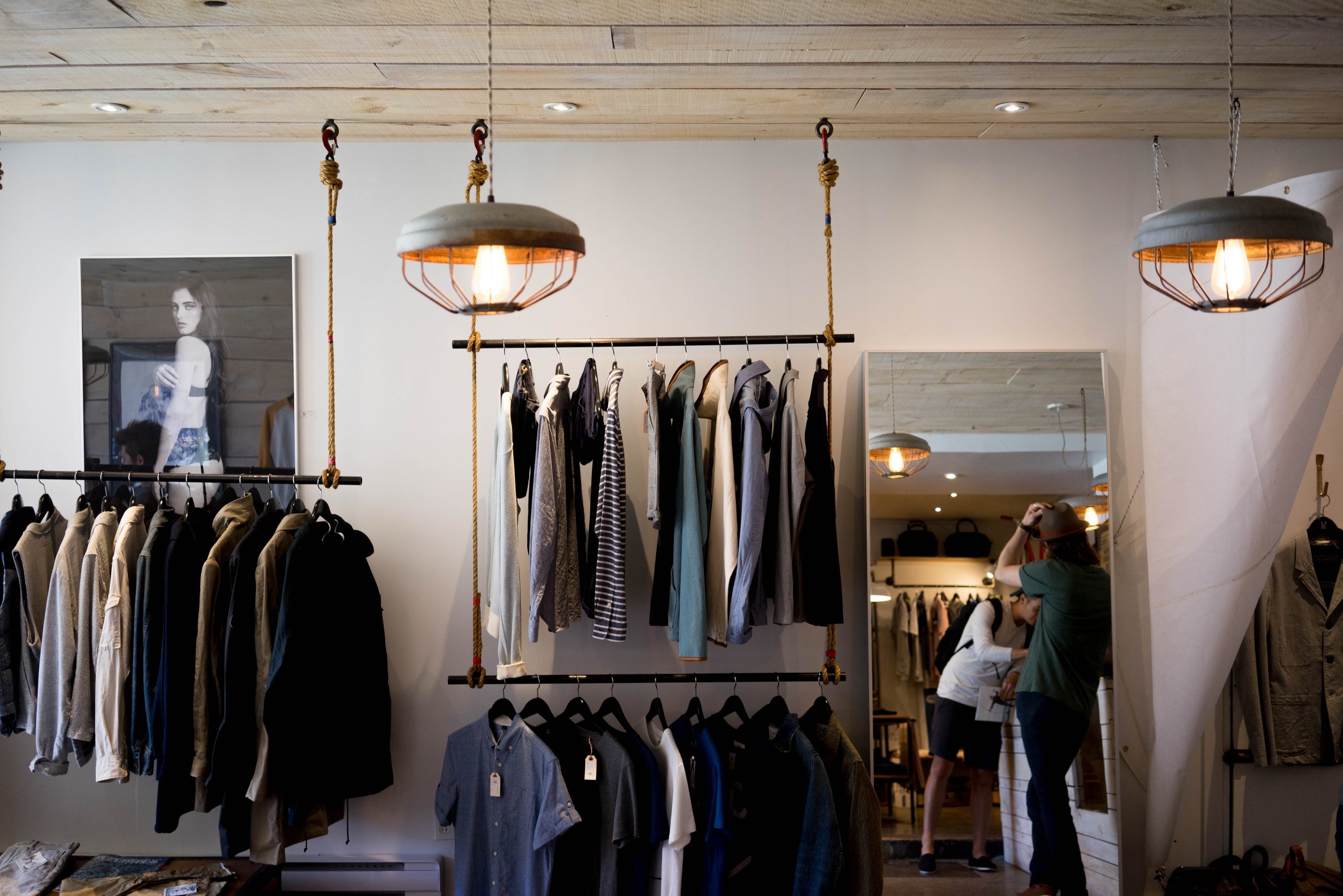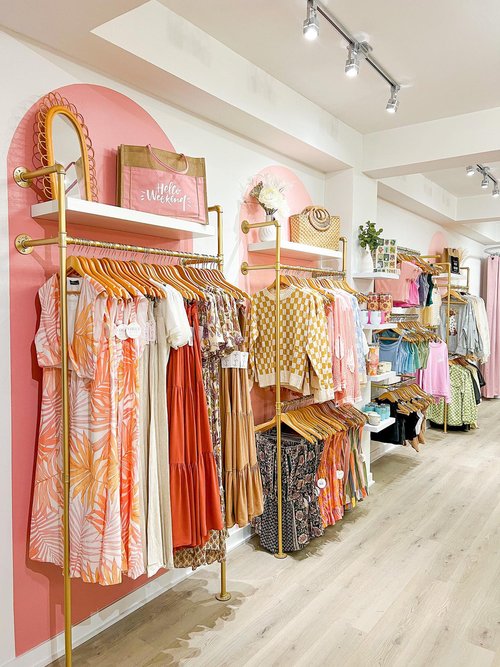Exploring the Development and Influence of Clothes on Modern Style Trends
The evolution of garments has actually dramatically influenced modern-day fashion patterns, combining historic precedents with innovative advancements. Renowned figures like Coco Chanel and Yves Saint Laurent transformed the fashion business by presenting concepts that prioritize comfort and availability, which proceed to reverberate today. Meanwhile, technological strides in areas such as 3D printing and wise textiles are redefining style opportunities and customer experiences. In addition, the expanding focus on inclusivity and sustainability is improving industry standards. As we think about these diverse impacts, one have to question how these aspects jointly redefine style's role in reflecting and shaping contemporary society.
Historical Style Influencers
In the tapestry of fashion background, certain numbers have left an enduring mark, shaping the fads and styles that define whole eras. Coco Chanel, an innovative designer, redefined women's style by presenting comfortable, sophisticated clothes that departed from restrictive bodices.
Elsa Schiaparelli is an additional essential figure, renowned for her avant-garde layouts that included surrealist art, teaming up with Salvador Dalí to produce whimsical pieces that challenged standard appearances. Her ingenious use color and bold patterns resounds in contemporary style. Yves Saint Laurent, meanwhile, democratized high style with prêt-à-porter collections, bringing runway styles to the masses and establishing a criterion for modern ready-to-wear lines.
These enthusiasts, to name a few, not just revolutionized fashion in their times however additionally established enduring patterns that reverberate in today's garment industry, providing a foundation upon which contemporary developers continue to innovate and develop. Their traditions emphasize the importance of imagination and daring in style's ever-evolving story.
Technological Improvements in Fashion
In the middle of the vibrant landscape of the fashion business, technological improvements stand at the forefront of advancement, reshaping how developers develop and consumers engage with style. The assimilation of 3D printing has actually revolutionized style procedures, enabling designers to explore intricate structures and sustainable materials that were formerly inconceivable. This innovation facilitates fast prototyping, lowering waste and speeding up manufacturing times.

Smart fabrics, installing innovation right into fabrics, are likewise changing the market. Technologies like self-cleaning and temperature-regulating textiles provide boosted functionality and convenience. Wearable technology, integrating attributes like physical fitness monitoring and communication, includes a brand-new dimension to style, combining appearances with functionality.
Cultural Shifts and Design
As technical advancements remain to improve the garment industry, cultural shifts are just as significant, redefining design and consumer preferences. In recent years, the rise of social networks platforms has sped up the dissemination of worldwide fashion trends, allowing diverse cultural impacts to exist side-by-side and merge. This electronic interconnectivity has actually promoted the quick exchange of concepts, causing a much more inclusive and eclectic analysis of design that shows the diverse nature of modern society.
Social recognition and recognition have actually triggered designers to draw ideas from a more comprehensive range of ethnic and historic contexts, integrating conventional motifs my response with contemporary appearances. This blend has led to fashion that reverberates with a broader target market, promoting a sense of identification and belonging throughout different demographics. Additionally, the increasing demand for customization has driven brands to supply adjustable options, enabling customers to reveal individuality while mirroring their social heritage.
Additionally, shifting social values have actually affected fashion, with inclusivity and variety coming to be central motifs. The market has started to accept models and influencers of numerous body kinds, ethnic backgrounds, and gender identifications, challenging standard charm criteria. This improvement highlights the power of cultural changes fit the future of fashion, as design becomes an extra genuine expression of personal and cumulative identity.
Sustainability and Modern Layout
While the garment industry continues to progress, the critical for sustainability has come to be increasingly urgent, affecting modern style techniques. This change aims to attend to ecological issues and honest factors to consider, resulting in a reevaluation of typical manufacturing methods. Designers are currently incorporating lasting products, such as organic cotton, recycled polyester, and naturally degradable textiles, into their collections, decreasing the eco-friendly impact of style. The rise of sluggish fashion, which highlights top quality over amount, encourages consumers to buy classic items rather than short-term fads.
Moreover, contemporary style is characterized by its innovation in minimizing waste and promoting circularity. Strategies such as zero-waste pattern cutting and 3D knitting are obtaining grip, enabling designers to create garments with minimal textile wastefulness. Furthermore, brands are adopting clear supply chains, making certain responsibility and promoting consumer trust fund. This strategy not just reduces environmental influence however also boosts the social duty of fashion residences.

Future Trends in vogue
Sustainability will certainly remain to be a driving force in forming future fashion fads. The market is increasingly taking on eco-friendly products and ethical manufacturing techniques, replying to an expanding consumer need for responsible techniques. Advancements such as bio-fabricated materials and closed-loop recycling systems are established to redefine exactly how clothing is generated and taken in, lowering ecological impact while keeping style and quality.
Cultural changes, consisting of the rise of inclusivity and variety, will also play a crucial role. As culture becomes extra aware of social concerns, fashion is anticipated to become a system for expression and change. Developers will likely focus on developing collections that show a more comprehensive variety of experiences and identifications, championing depiction and ease of access.
Conclusion
The evolution of clothing considerably impacts modern fashion trends, where historical influences merge with modern look at this web-site layouts. This ongoing evolution emphasizes style's duty as a mirror to social worths and technical innovation, recommending a future abundant with technology and inclusivity.
The advancement of apparel has actually dramatically affected modern-day style fads, combining historic precedents with advanced developments.In the middle of the dynamic landscape of the fashion sector, technical improvements stand at the leading edge of development, reshaping how developers develop and consumers engage with fashion.While the fashion industry continues to advance, the necessary for sustainability has actually become increasingly immediate, affecting modern design techniques. As sustainability comes to be ingrained in contemporary style, it leads the method for a more liable and mindful fashion market.
The evolution of apparel substantially impacts modern-day fashion patterns, where historical influences merge with modern designs.